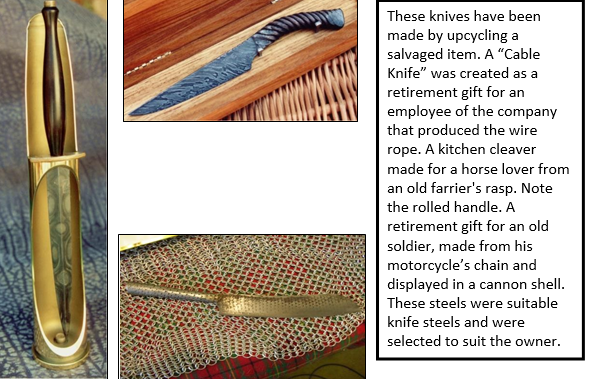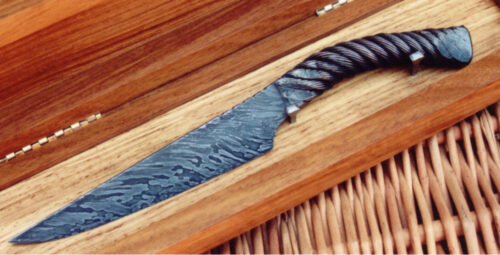June 17, 2024 by Heather
Upcycling And Recycling Steel For Knives
“Junkyard Junkies!”
It is not something I recommend, though, as scrap steel is in a scrap pile for a reason: it has been used. I know you will want to buy every old Landrover leaf spring you find, but please keep in mind that that piece of steel, although it is the correct type for forging blades, has worked! I may have stress cracks in it, and unless you are making a “story knife”, I would not recommend you use it. The price difference between new, certified spring steel and a used spring is negligible.

As an Amazon Associate I earn from qualifying purchases.
List of Knife-Related Suppliers in South Africa.
I am a confirmed junkyard and steel scrapyard junkie! I cannot help myself, and I know that no matter what advice I give you, you will become one, too! Sorry.
I only recommend reusing steel only if you are forging a “story knife.” For example, if the Landrover owner loved that vehicle and it had great sentimental value, he might ask you to forge a knife from a part of it. Educate yourself to know what parts of vehicles, old farm equipment, or, for that matter, anything that you might find in a scrapyard might have been made from. Check the part carefully for damage (rust does not count), then test a small piece with a spark test and a hardenability test.
A hardenability test will help to determine if the piece of scrap steel you have will harden. Often, pieces have been case hardened where only the outer skin of the steel is hard, with the majority of it being mild steel. This might spark well but not harden.
Heat the test section to critical temperature (the lowest temperature at which the steel loses its magnetism), quench it in oil, place it in a vice, and hammer it as if to break it. If it bends without resistance, it is mild steel; if it resists bending or breaks, it is hardenable.
There are a few well-known bladesmiths who specialize in story knives. One lady only forges her knives from old farrier’s hoof rasps and is well known for her work. The retired armourer to the Queen of England made knives incorporating steel from Windsor Castle after a fire destroyed part of it. He was also able to obtain steel from famous shipwrecks as well as from the Twin Towers. He always incorporated this steel with a higher carbon steel to make a damascus blade. If you are already making damascus steel you can buy the appropriate steel through this link https://amzn.to/45WW5uD
Kevin and I, when we were still accepting orders, made story knives for a soldier from shrapnel from his leg and a Harley Davidson drive chain from a very old bike. If you make a story knife, document every part of it with photos of the collection of the “scrap” to the forging of the damascus blade and the finishing of the knife. It needs provenance, and the story must be recorded on the knife certificate.

In conclusion, salvaged steel should be used with care. Test each piece that you use. If it is a small piece, incorporate it with high-carbon steel to make a damascus blade. Document the whole story, and lastly, join a support group and attend your meetings regularly! Take it a day at a time!




Leave a Reply